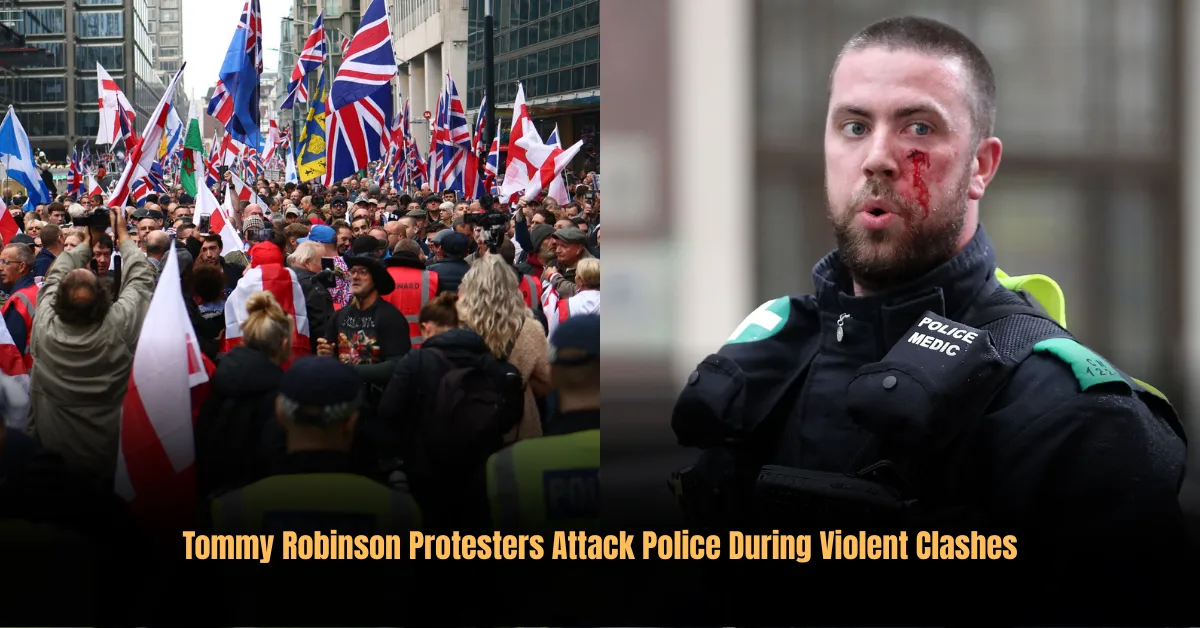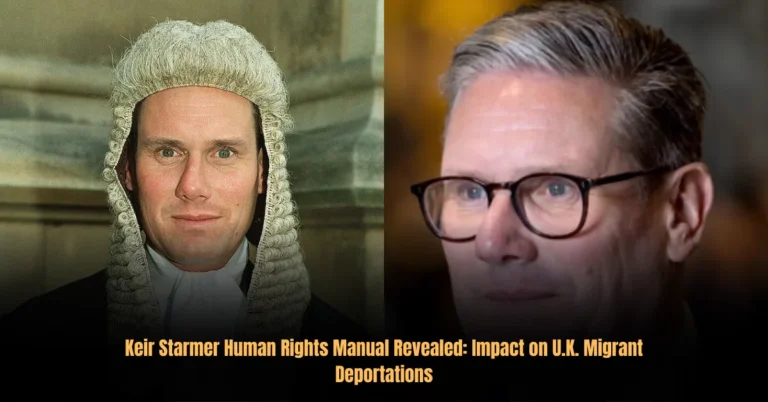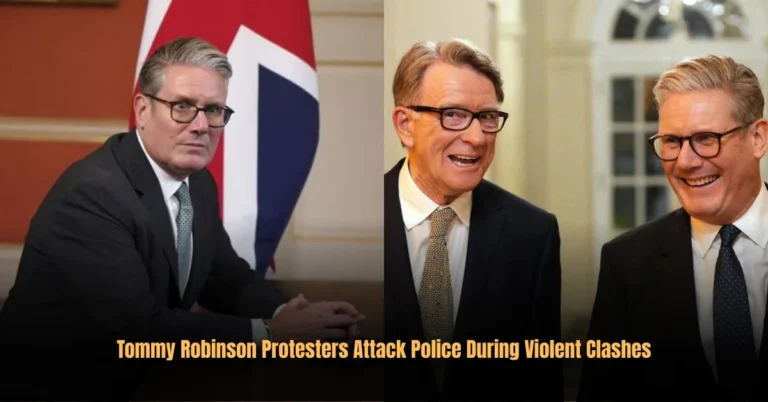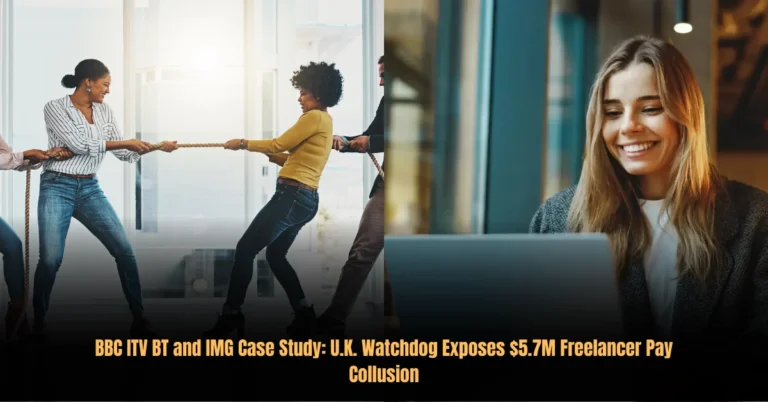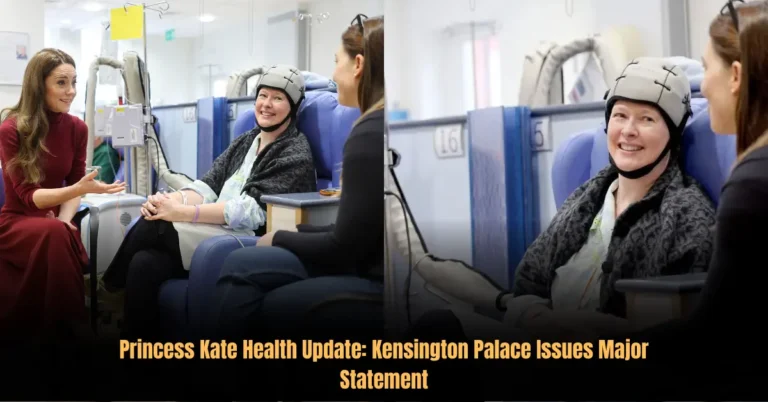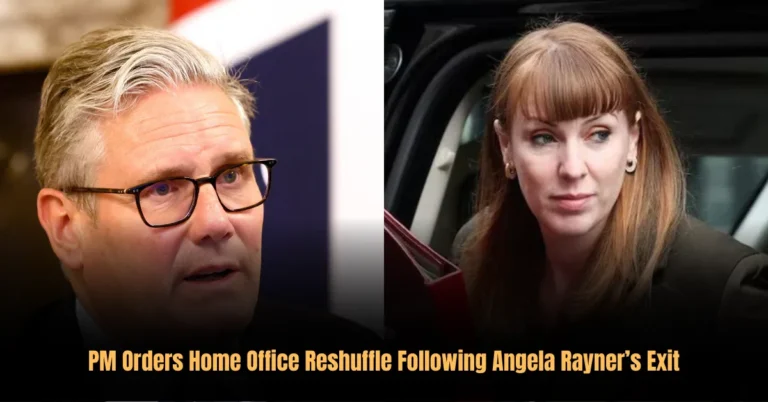Tommy Robinson Protesters Attack Police During Violent Clashes
The Day London Burned
A City on the Brink: The Scene is Set
On Saturday, September 13, 2025, London felt tense. The city is used to protests, but this day was different. Thousands of people gathered for the “Unite the Kingdom” rally. The event was led by far-right activist Tommy Robinson, whose real name is Stephen Yaxley-Lennon. The organizers said it was meant to be peaceful, but the mood was full of tension. At the same time, a smaller counter-protest happened. Groups like Stand Up to Racism were also there.
The Metropolitan Police were ready. More than 1,600 officers were on duty, and 1,000 of them were assigned to the protests. Their job was to keep peace and stop fights between protesters and opposing groups. The police made a cordon in Whitehall to keep the groups apart. But the crowd was huge. Police estimated about 110,000 people attended. The rally stretched from Big Ben across the River Thames to Victoria Station. Controlling such a big crowd was very difficult.
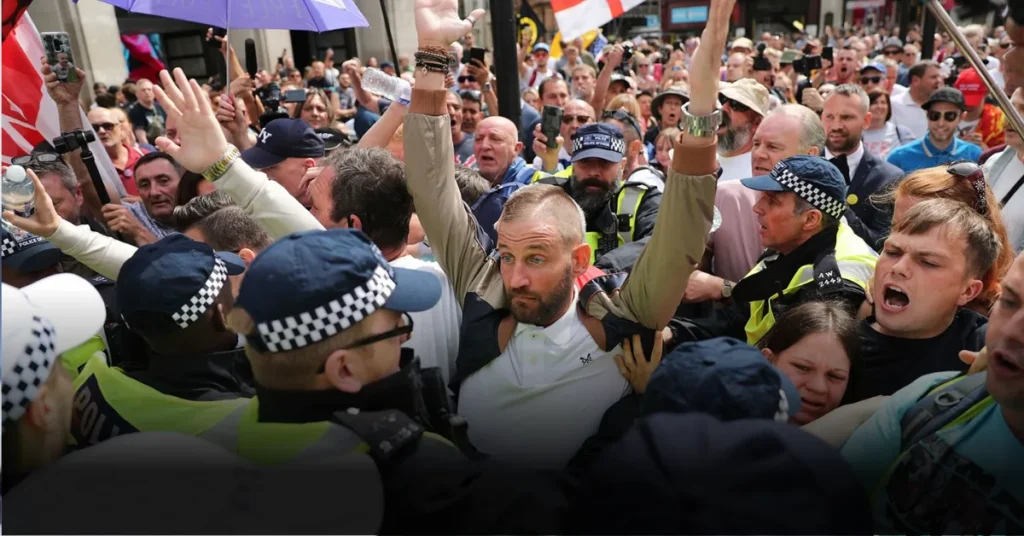
Behind the Headlines: The True Purpose of the Protest
The Tommy Robinson march said it was for free speech, British heritage, and to oppose current immigration policies. Many people waved English flags and chanted, “We want our country back.” The protest followed a recent, very public killing of a young British person and some earlier local anti-migrant protests that turned violent.
Also Read: Man Charged With Sexually Assaulting Woman on Popular U.K. Beach
Some signs at the protest said, “Stop the boats” and “Send them home.” The protest showed far-right beliefs and anti-immigration feelings. For many, it was about nationalism and protecting British culture.
The Spark of Chaos
The First Domino Falls: How a Peaceful Protest Became Violent Clashes
As the protest went on, a part of the crowd left the main group. Angry and frustrated, they went toward the police cordon in Whitehall. This area is important because it is the center of UK politics. At first, there was some pushing, but soon it became violent. The police reported that protesters attacked officers, threw objects, and tried to break the police line.
A Wall of Shields: The Moment Police Became Targets
The peaceful chants changed into the sound of objects hitting shields. Protesters threw bottles, cans, and smoke bombs at officers. The police had to use batons and physical force to stop people from breaking the cordon. The tension was very high. The officers were the only thing stopping the two sides from fighting each other directly.
From Chants to Chaos: The Projectiles That Flew
Protesters threw all kinds of things. Most of the crowd was peaceful, but a small group caused the chaos. This kind of violence has happened in other protests before. It worries both the police and the public.
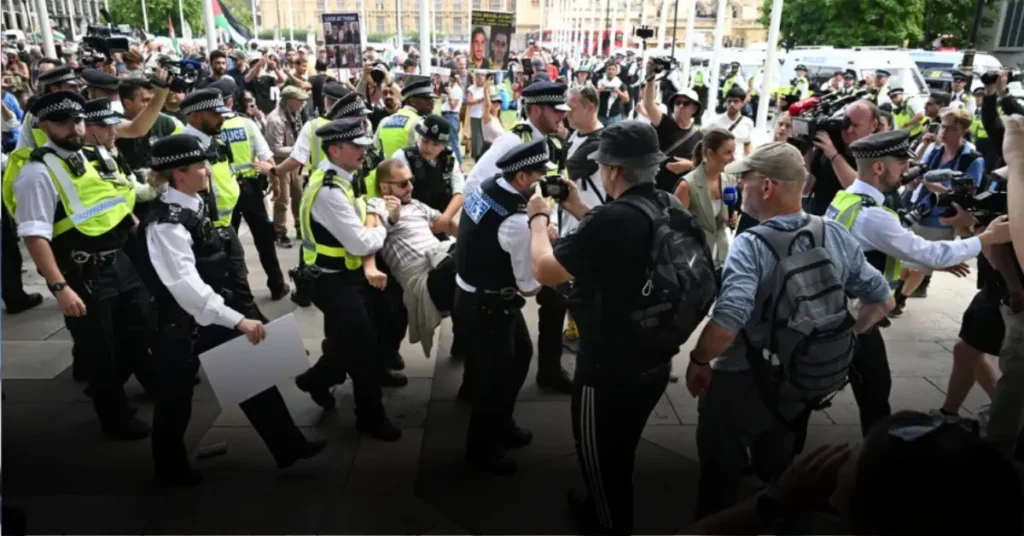
The Anatomy of an Attack
A Storm of Violence: The Weapons Used Against Officers
The attacks were serious and planned. The police said many officers were hurt, some badly. Protesters used bottles, cans, and street debris as weapons. These acts are considered crimes like violent disorder and assault on police.
Also Read: Keir Starmer Human Rights Manual Revealed: Impact on U.K. Migrant Deportations
When the Crowd Turns: Overwhelming the Thin Blue Line
The London protest showed how hard it is for police to control big crowds. Even with 1,000 officers, the crowd was huge and aggressive. The cordon was under heavy pressure. Police had to use force to stop the crowd from breaking through. Arrests were made while officers tried to protect people and keep the city safe.
The Unflinching Response: Officers Stand Their Ground
Despite the attacks, the police held their line. Their training helped them stay calm. They used shields and batons carefully to stop the attackers without making things worse. Their actions stopped a possible full-scale riot.
The Immediate Aftermath
Counting the Casualties: An Official Tally of Injuries and Arrests
After the protest, police had to check the damage. They reported that some officers were injured, but the final numbers are not out yet. Several people from the “Unite the Kingdom” rally were arrested. Charges included assaulting officers and violent disorder. The total arrests will show how big the problem was.
A City in Shock: The Public Reaction to the Disorder
The public reacted quickly. Many were angry about attacks on police. Others talked about the right to protest and police responsibility. The event restarted debates about far-right activism, free speech, and political violence. Social media was full of videos and opinions, with many condemning the violent protesters.
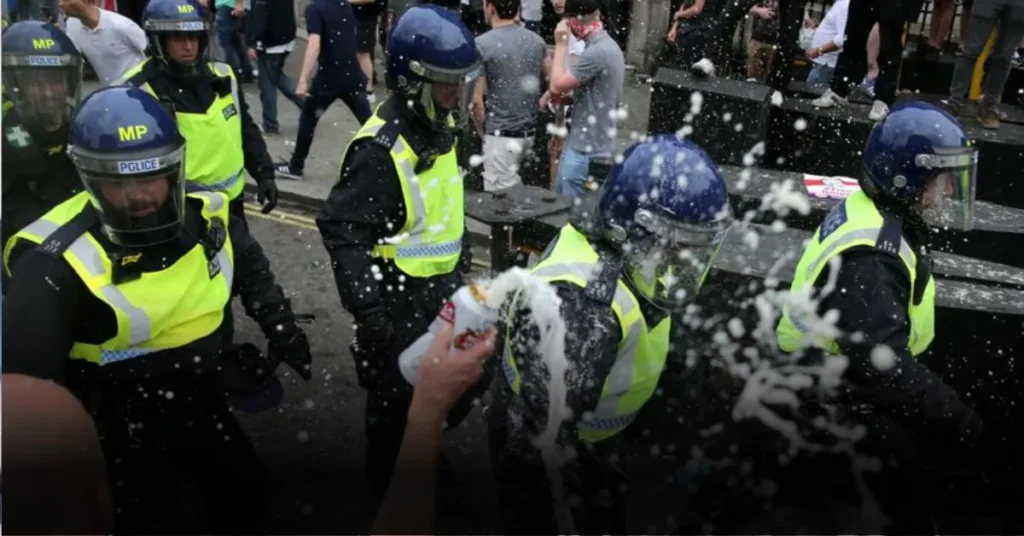
The Morning After: Waking Up to a Changed Landscape
The day after, London looked quiet. Streets were cleaned, but the memory of violence stayed. The event reminded the city how quickly a peaceful protest can become dangerous. It also showed the deep divisions in society.
Also Read: BBC ITV BT and IMG Case Study: U.K. Watchdog Exposes $5.7M Freelancer Pay Collusion
Political Fallout
Finger-Pointing and Factions: How Politicians Reacted
Politicians reacted fast. Their reactions showed their political views. Many on the left said far-right activists caused the violence and wanted to divide people. Some on the right said the problem was only a small part of the protest. They argued most protesters were peaceful. This debate reflected larger political arguments in the UK.
A National Debate Ignited: The Future of Protest in the UK
The violence made people think about future protests. Some asked if police tactics like kettling are safe. Others worried about more violent events happening. The main question is how to balance the right to protest with keeping people safe.
The Legacy of the Clashes
Lessons Learned: Did Law Enforcement Get It Right?
The Metropolitan Police will review their actions. They will look at whether they could have stopped the violence sooner. The attack on the police cordon raises questions about how to manage large protests safely.
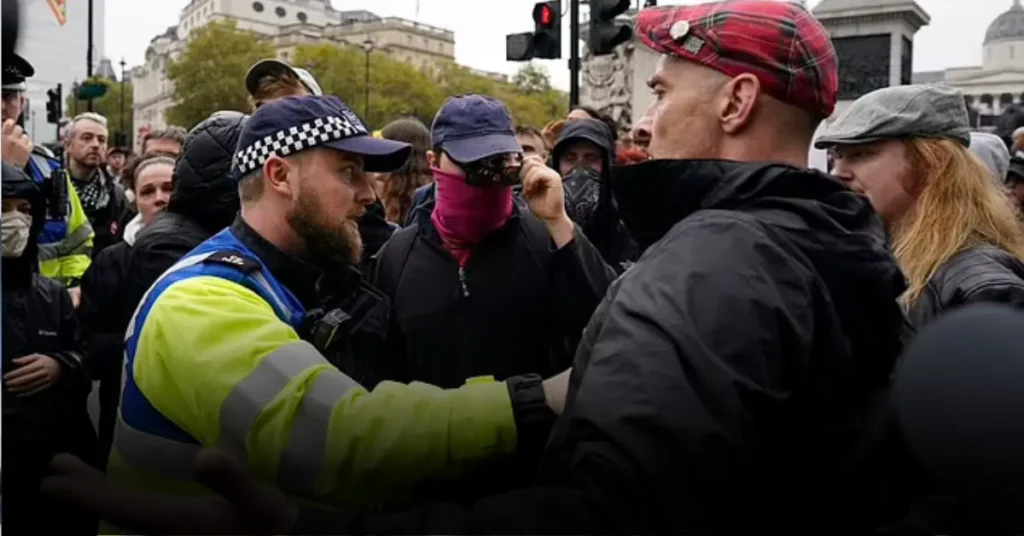
Echoes of Discord: Why These Events Will Linger in the Public Memory
The events of September 13, 2025, will be remembered for years. They show how divided the UK is. Images of protesters attacking police will likely be used in politics for a long time. The day is a reminder of how fragile public order can be and what can happen when social tensions rise.
Also Read: TikTok Star Visits Southampton in New Viral Social Media Video
About the Author
Shoaib Khan is a freelance journalist and writer based in London. He focuses on social issues, politics, and current events. Shoaib aims to present news and stories in simple, clear language that everyone can understand.

